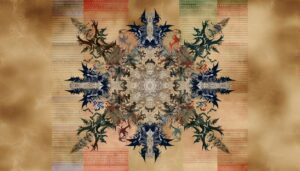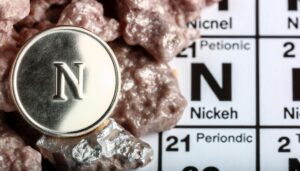What Does the Hebrew Symbol for Life Mean?
The Hebrew symbol for life, 'Chai,' comprises the letters Chet (ח) and Yud (י), originating from ancient Semitic languages and Judaic tradition. It signifies not only life, but also vitality, continuity, and resilience.
Historically, 'Chai' appears in early Hebrew texts and has a significant presence in the Torah. Culturally, it symbolizes good fortune, often represented through monetary gifts in multiples of 18 due to its gematria value.
In modern times, 'Chai' is commonly featured in jewelry and art, embracing both aesthetic beauty and profound meaning. To uncover the depth of 'Chai,' consider its widespread influence across history and culture.
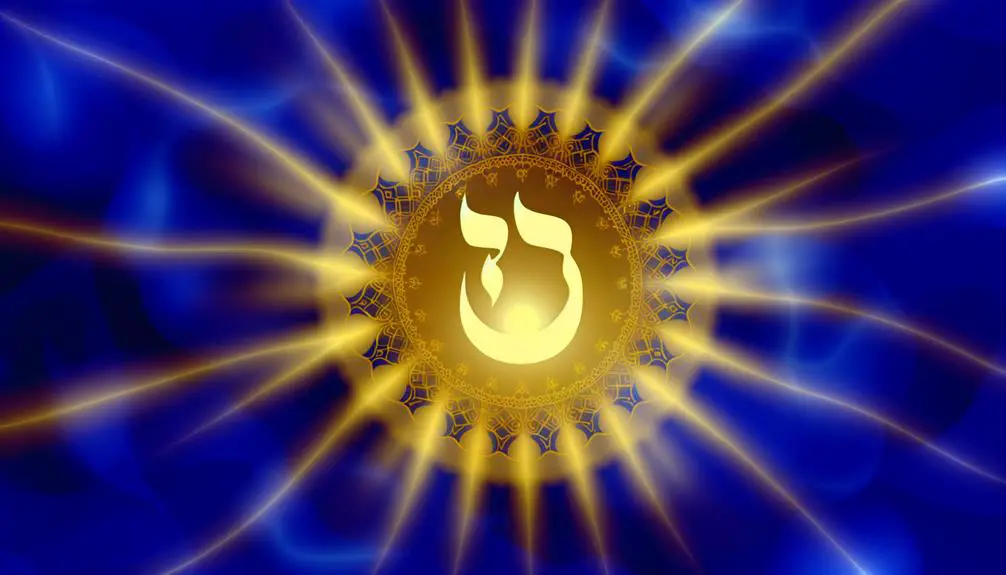
Key Takeaways
- The Hebrew symbol for life is 'Chai,' comprising the letters Chet and Yud.
- 'Chai' signifies vitality, continuity, and resilience in Jewish tradition.
- The gematria value of 'Chai' is 18, symbolizing good fortune and longevity.
- 'Chai' is commonly worn as jewelry for life affirmation and protection.
- 'Chai' is used in greetings like 'L'Chaim,' meaning 'To life!'
Historical Origins
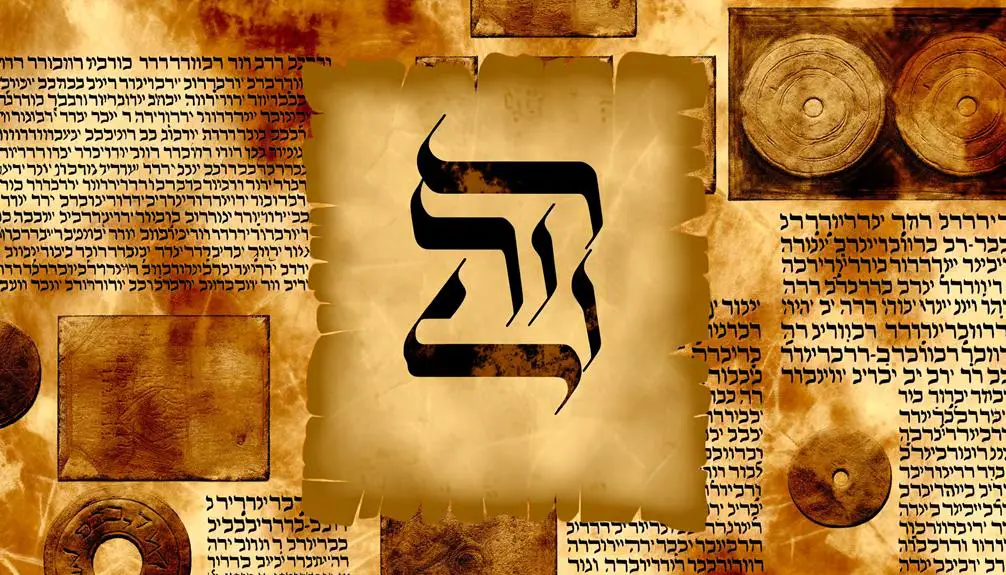
The Hebrew symbol for life, known as 'Chai' (חַי), finds its origins deeply embedded in ancient Semitic languages and Judaic tradition.
Comprising the letters Chet (ח) and Yud (י), 'Chai' encapsulates more than its literal translation of 'life.' The term traces back to early Hebrew texts and inscriptions, where it was utilized in various contexts to signify essential and existence.
Historical linguistics reveal that the roots of 'Chai' are interwoven with other Semitic languages, sharing cognates and semantic fields. Additionally, the symbol holds a significant position in the Torah, where life is a recurring theme, reinforcing the importance of existence and divine creation.
This linguistic and historical foundation underscores 'Chai' as a profound element of Hebrew lexicon and ideology.
Cultural Significance
Building on its historical and linguistic foundations, 'Chai' (חַי) manifests a profound cultural significance within Jewish tradition and daily life. The term, meaning 'life,' encapsulates values such as vitality, continuity, and resilience. It is not merely a word but a symbol deeply embedded in Jewish consciousness.
| Aspect | Explanation | Example |
|---|---|---|
| Numeric Value | Chai has a gematria value of 18, symbolizing good fortune. | Monetary gifts often in multiples of 18. |
| Jewelry | Commonly worn to signify life and protection. | Chai necklaces, bracelets. |
| Celebrations | Associated with joyous occasions and blessings. | Bar/Bat Mitzvahs, weddings. |
| Language Usage | Employed in greetings and expressions of well-being. | 'L'Chaim' (To life!). |
The cultural resonance of 'Chai' extends across various expressions, infusing daily interactions with a reminder of life's importance.
'Chai' in Jewish Tradition
In Jewish tradition, the concept of 'Chai' (חַי) permeates religious practices, rituals, and daily observances, embodying the sanctity and celebration of life.
The term 'Chai' translates directly to 'alive' or 'living' in Hebrew, derived from the root word חי׳ה (chayah), meaning 'to live'.
Historically, 'Chai' holds significant importance in Jewish numerology, where its numerical value is 18, symbolizing good fortune and longevity.
The prominence of 'Chai' is evident in various customs, such as the giving of monetary gifts in multiples of 18, expressing wishes for a long and prosperous life.
Additionally, the 'Chai' symbol is often worn as jewelry, serving both as a personal affirmation of faith and a reminder of the divine gift of life.
Symbolism in Modern Times
While 'Chai' has deep historical roots in Jewish tradition, its symbolism has evolved to hold significant meaning in contemporary culture as well.
In modern times, 'Chai,' which translates to 'life' in Hebrew, serves as a powerful emblem of vitality and resilience. Linguistically, the two Hebrew letters, Chet (ח) and Yud (י), collectively symbolize a life force that transcends temporal boundaries.
Historically, this symbol has been embraced within Jewish communities to represent a commitment to living life with purpose and vigor. Today, 'Chai' resonates universally, often used in contexts that celebrate life's milestones and challenges. Its adoption in modern lexicon underscores a timeless connection to heritage while embodying the enduring human spirit.
'Chai' in Art and Jewelry
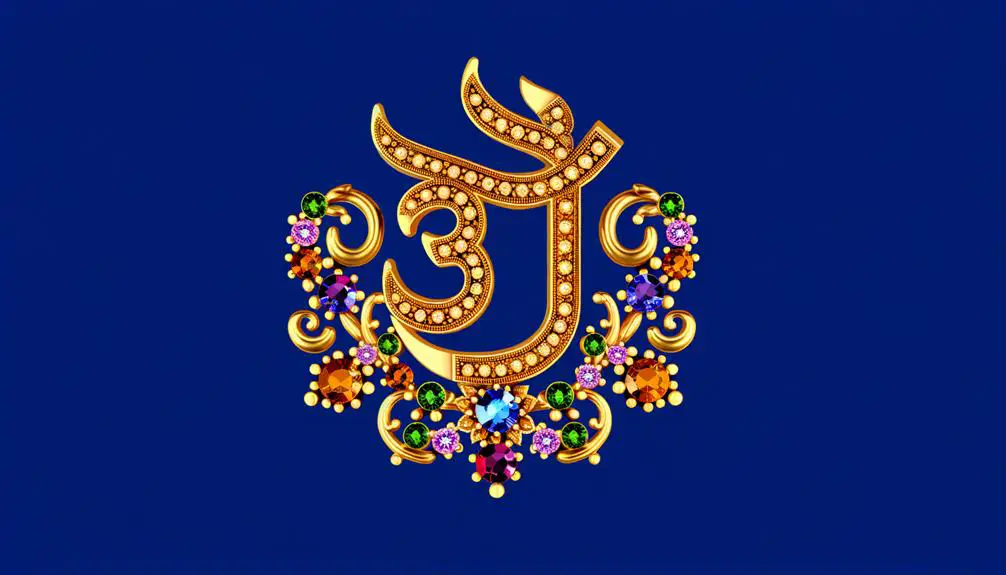
How has the symbol 'Chai' transcended its traditional roots to become a prominent motif in contemporary art and jewelry design?
The Hebrew word 'Chai', meaning 'life', comprises the letters Chet (ח) and Yud (י). Historically rooted in Jewish mysticism and culture, Chai has evolved beyond its scriptural origins to embody universal themes of vitality and resilience.
In modern art, Chai is often rendered in diverse mediums, from calligraphy to sculpture, reflecting both its ancient lineage and contemporary significance.
In jewelry design, Chai pendants and charms are crafted in various materials, including gold and silver, often embellished with gemstones. This duality of tradition and modernity makes Chai a meaningful and aesthetically compelling symbol in today's artistic and cultural landscape.
Conclusion
The Hebrew symbol 'Chai,' representing life, draws from millennia of cultural and religious tradition. It embodies not only the essence of existence but also a collective historical resilience.
In contemporary times, 'Chai' has transcended its origins, becoming a popular motif in art and jewelry. Much like the eternal flame in Jewish temples, 'Chai' serves as a radiant beacon of continuity and hope, symbolizing life's enduring and undying nature across generations.


